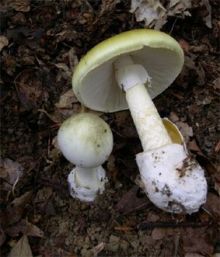There are many different species of poisonous mushrooms in New Zealand and many poisonous mushrooms can look remarkably similar to "non-toxic' mushrooms. Even tiny amounts of some mushrooms can cause serious poisoning.
Which Kinds of Mushroom Are Poisonous?
NEVER try to identify a mushroom yourself. Textbooks and the internet are not a reliable source for identification since poisonous and non-poisonous mushrooms often look alike. Only an experienced mycologist can reliably identify a mushroom, and these days DNA sequencing is often relied upon for official identification.
Even "non-toxic" wild mushrooms can sometimes cause poisoning due to excessive consumption, difficulty in digestion, spoiled fungi, presence of heavy metals, parasitic growth in fungi or spore allergies.
What Kinds of Symptoms Do Toxic Mushrooms Cause?
There are many different types of toxic mushrooms, and they cause a variety of effects.
Some mushrooms cause vomiting and diarrhea, others may cause slowing of the heart rate and lowering of the blood pressure, some cause hallucinations and seizures, and others can cause life-threatening liver and kidney toxicity.
Some types of mushroom poisoning can occur rapidly, whereas some very toxic mushrooms can have symptoms that are delayed for several days or weeks.
How Can I Prevent Poisoning From Mushrooms in My Home?
Only eat mushrooms which are bought at a supermarket or market garden. Never eat wild or unknown mushrooms.
Remove all mushrooms growing in your garden before children or pets enter the area. Mushrooms are only toxic by ingestion, so it is OK to handle the mushrooms, even toxic ones, and throw them away in your usual rubbish. Do not compost mushrooms, as this will spread the spores.
It is not practical to have all mushrooms identified. This is a complicated process which can be unreliable even when done by experts. Correct identification of a mushroom is not always relevant to a patient’s treatment and therefore is not a service provided by the National Poisons Centre for the public.
A Person Has Eaten an Unknown Mushroom, What Do I Do?
- Immediately call the National Poisons Centre on 0800 POISON for specific advice on what to do.
- Remove any remaining residue from the mouth.
- DO NOT INDUCE VOMITING
- Keep an intact sample if possible

